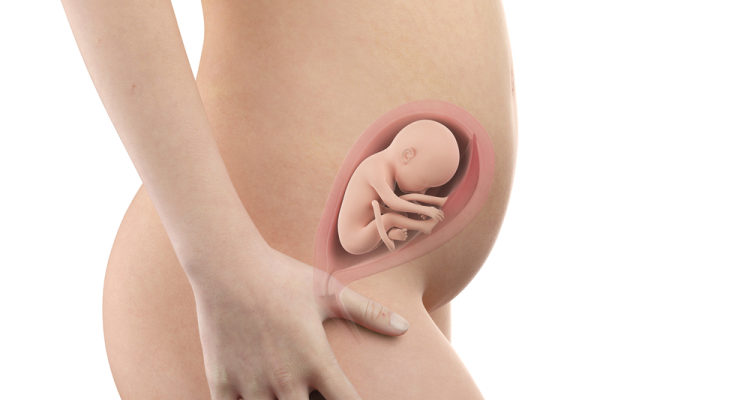The luteum phase is also known as the post-ovulation period. Although many women do not know this stage, but in fact, the luteal phase plays a very important role. If you have defective luteum phase, you could have a miscarriage.
If you are having difficulty getting pregnant or have a miscarriage, it is possible that a defective luteum is the cause. This is a disruption to a woman's menstrual cycle. Although there is still a lot of debate about whether the luteal phase is the direct cause of infertility or not, you should not be subjective and ignore the information that aFamilyToday Health shares below.
1. What is the luteum phase?
The period that occurs after ovulation but before the first day of the next menstrual cycle is called the luteum phase. On average, this period lasts from 10-14 days.
Some women with fertility problems will have a short luteal stage. In addition, persistent miscarriages (miscarriages of two or more consecutive times) are also associated with an abnormally short luteum phase. Problems in the luteal phase are sometimes called the luteal defect.
2. What happens during the luteal stage?
The menstrual cycle can be divided into two main parts: the ovarian follicle stage (follicular stage) and the luteum phase. The ovarian follicle development phase involves stimulating hormone changes in the ovarian follicle until an egg matures and falls off. After ovulation, the follicle that releases the egg becomes luteum. The corpus luteum secretes estrogen and progesterone.
Although the hormone estrogen is very important, progesterone is the most essential hormone in the luteum stage because:
Inhibits the hormones GnRH, FSH and LH: These are hormones that stimulate the ovaries and cause ovulation. If not, you can get pregnant again after you become pregnant.
Ready for the endometrium: Progesterone activates the lining of the uterus (or the endometrium) to secrete proteins that specifically nourish the embryo.
Preventing periods from coming: Progesterone prevents the endometrium from breaking down, which can lead to a miscarriage if you're pregnant.
Progesterone also increases the body's temperature. If you have a good grasp of your body's heat chart, you will notice a slight increase in temperature after ovulation. If you are pregnant, your temperature will be higher during the luteal phase. If you're not pregnant, your temperature will start to drop just before your period.
Progesterone is also responsible for the symptoms of the luteum phase, which many women mistake for early signs of pregnancy .
3. What is the normal luteum phase?
On average, the luteal phase lasts from 12 to 14 days. However, it can be as short as 8 days or up to 16 days. For example, if a woman has an average luteal period of 12 days, it usually takes place between the 11th and 13th days of her menstrual cycle. If the period is longer than 13 days, it could be an early sign of pregnancy.
A luteal phase shorter than 8 or 10 days may indicate a fertility problem but sometimes this is still not so obvious. It is perfectly possible to find out the length of the luteal phase of yourself from the baseline body temperature chart .
If you are making a chart and find that your luteum stage is quite short and without any other symptoms of infertility, don't worry. However, if you are not pregnant after a year of trying to conceive (or after 6 months and 35 years or older), see your doctor for advice and treatment right away.
4. What is the luteal phase defect?
The impaired luteum phase can cause infertility and repeated miscarriages due to low or insufficient progesterone levels. There's a lot of controversy surrounding this diagnosis, stemming from:
Diagnostic difficulty: A few studies have found no definitive way to examine or confirm defective luteum stage.
Results are not clear: Short luteum phase or low progesterone levels do not always cause infertility or recurrent miscarriage.
Uncertain Treatment Outcome: It is unclear whether the proposed treatments actually improve fertility or can prevent miscarriage.
Symptoms or problems potentially related to the defective luteum phase include:
Small blood spots appear between the time of ovulation and the menstrual cycle
Repeated early miscarriages
Ovulation abnormality
Short menstrual cycle.
5. The cause
The luteal phase is usually about 12 to 14 days long. During this time, your ovaries make a hormone called progesterone, which signals the lining of the uterus to grow. When you are pregnant, your baby will cling to this thick lining. If there is no pregnancy, the lining eventually falls off and the period simultaneously appears.
Defective luteal phase can occur if your ovaries don't release enough progesterone. This condition is associated with many health problems, including:
Anorexia
Endometrial optimism
Workout with too much intensity
Fat
Polycystic ovary syndrome
Thyroid disorder.
6. Treatment for this condition
Effective treatment of luteal phase defect has not been clearly demonstrated. Therefore, the doctor will consider a number of factors such as:
Prioritize the treatment of the underlying condition: If you have a thyroid imbalance, treat it first.
Increased ovulation with fertility drugs: By promoting ovulation, the luteal phase can occur normally.
Progesterone supplementation: This measure is highly controversial, although it is undeniable that progesterone supplementation can improve fertility or reduce premature pregnancy loss.
Injections of hCG (important hormone, secreted only during pregnancy): low doses of hCG can be considered during the luteum phase. However, progesterone supplementation is still more common due to the few side effects associated with women.












